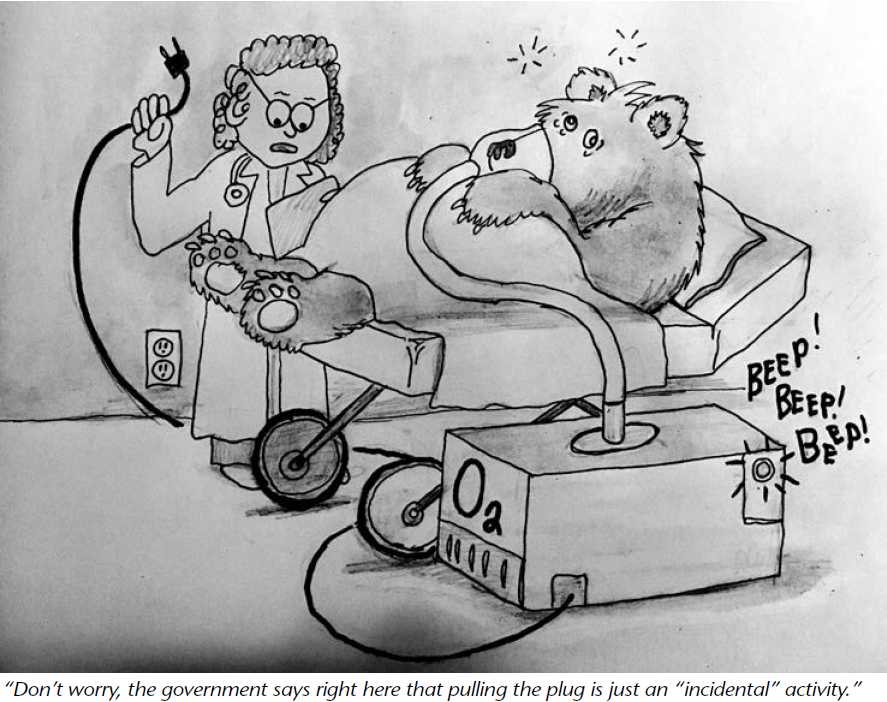
Action Alert: Species at (More) Risk?
March 28, 2017
- •
- •
- •
Dear Wilderness Defender:
Laws are only as good as the policies that guide how they are implemented. That’s why AWA is concerned about a handful of proposed policies proposed by Environment and Climate Change Canada (ECCC) under the Species at Risk Act (SARA) – we think the new policies will weaken protection for Canada’s most vulnerable wildlife. Because Alberta doesn’t have its own species-at-risk legislation, it is so important that we tell ECCC by March 31 to strengthen the policies.
-Andrea Johancsik, Conservation Specialist
Take Action
Write the SARA Registry at ec.registrelep-sararegistry.ec@canada.ca to say the proposed SARA policies must be strengthened to protect and recover threatened and endangered species at risk. The deadline is March 31, 2017.
Please copy me at ajohancsik@abwild.ca!
The Issue
AWA has submitted letters on all the policies, but our main concerns lie with the policies of Permitting and Critical Habitat on Non-Federal Lands. Under each policy below, we’ve listed the main points we think the Registry must consider about three of the policies. Above all, tell the Registry to implement policies that will uphold the intent of SARA to recover threatened and endangered species. Read AWA’s submissions on the Permitting and Critical Habitat policies.
Permitting Policy
This policy concerns the interpretation of Section 73 of the Species at Risk Act. It intends to specify which activities are permitted in critical habitat for species at risk and under what conditions someone can obtain approval to do that activity or work.
- The Permitting Policy is inconsistent with SARA in that it appears to allow industrial development and other damage to critical habitat of species at risk, by claiming that harming the species is incidental to the carrying out of the activity. In other words, the current interpretation of “incidental” suggests that damage to critical habitat for species at risk is allowed as long as that isn’t the primary purpose of the activity.
- Industrial development should not satisfy the condition set out by section 73(2)(c) as only ‘incidental harm’. AWA believes that the only interpretation of the word “incidental” consistent with SARA is “minor” or “inconsequential”.
- Consideration of biodiversity offsets in a section 73(3)(c) determination is inconsistent with the meaning of critical habitat and the purpose of SARA. Critical habitat by definition is scarce and unique: it cannot be replaced.
- AWA believes that if an activity is determined to harm necessary habitat for a species’ ongoing survival, then it should not be allowed to happen.
Critical Habitat on Non-Federal Lands
AWA’s concerns around this proposed policy revolve around the idea of a “risk based” approach to critical habitat protection.
- A precautionary approach should be applied, rather than a risk-based approach. All critical habitats must be protected, not just those deemed ‘high-risk’.
- This policy must include a mechanism for interim on-the-ground measures while critical habitat assessment is ongoing.
- Commit to abiding by the 180-day requirement to protect critical habitat (Section 63 of SARA) in the absence of a Critical Habitat Protection Assessment decision, to avoid delays that will impair recovery.
Important Links
The proposed policies on the SARA website
Permitting Policy on the SARA website
AWA’s letter on the Permitting Policy
Critical Habitat Protection on Non-Federal Lands on the SARA website
AWA’s letter on Critical Habitat Policy
See AWA’s Advocate article about the Permitting Policy
Thank you for protecting Alberta’s species at risk!
